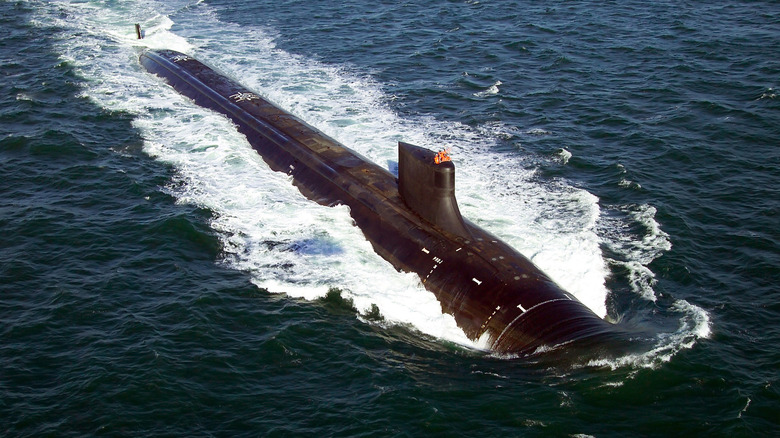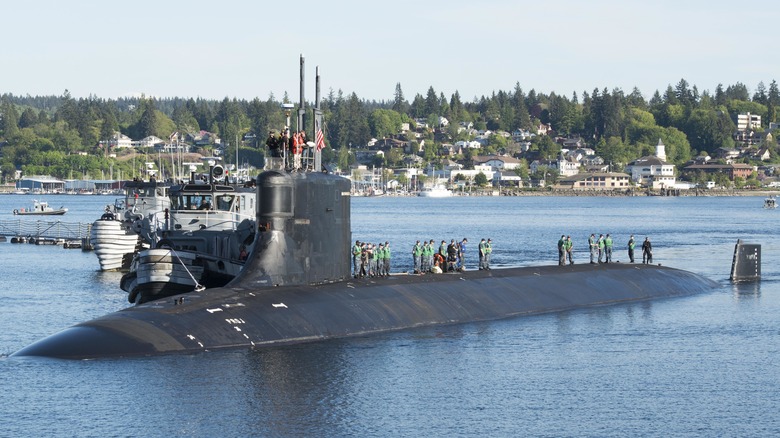What Happened To The USS Connecticut's Captain After The Submarine Crashed?
In October 2021, the USS Connecticut (SSN 22), one of three Seawolf-class submarines, crashed into a seamount, or undersea mountain. The Seawolf-class are a series of highly advanced attack submarines in the United States Navy. Dean Fearce once wrote, "It's not the size of the sword but the skill of the swordsman." The same sentiment can be applied to naval vessels. No matter how advanced a vessel is, it's only as good as the crew who operates it. So, when an attack submarine runs head-first into an underwater mountain, the blame tends to fall at the feet of those in charge. The Navy initiated an investigation immediately following the event.
The investigation's conclusion found that the entire incident was preventable and only happened because of a substandard performance from those in command. The Navy lost confidence in the boat's skipper, Cmdr. Cameron Aljilani, and opted to relieve him of his duty as Connecticut's commanding officer (CO). He was replaced by Capt. John Witte, who took over as interim CO. Vice Adm. Karl Thomas wrote in his report that "sound judgement, prudent decision-making and adherence to required procedures in navigation planning, watch team execution and risk management could have prevented the incident."
Losing command of the submarine didn't mean Aljilani was booted from the military altogether. He continues a fruitful career in the US Navy as a Nuclear Command, Control, and Communications (NC3) Director. He wasn't the only one relieved of duty, as Thomas also removed executive officer Lt. Cmdr. Patrick Cashin and Chief of the Boat Cory Rodgers.
The USS Connecticut was riddled with issues prior to the crash
Crashing into a seamount is a big deal and if it could have been preventable, it's a sign of systemic failure in the ship's command. However, it was just the tip of the iceberg. The history of the USS Connecticut is littered with preventable accidents and lapses in command judgement. A year prior to the crash, in 2020, the USS Connecticut (SSN 22) reported a bed bug infestation. An anonymous petty officer told Navy Times, "We've had bedbugs for a year now. Sailors complained about getting bitten in the racks." The issue had been occurring since March 2020, but a Naval Submarine Forces Pacific spokeswoman said it wasn't reported until December of 2020 and then they didn't find their "physical presence" until February of 2021. The Navy requires physical presence before it can act to remove the infestation.
In April 2021 there was an incident known as an allision, where the Connecticut slammed into a pier while mooring in San Diego, California. This prompted an investigation itself. The investigator recommended "the CO, XO, NAV, OOD, and ANAV receive administrative or disciplinary action for dereliction of duty," Forbes reported. It was especially concerning because the allision was another incident that could have been avoided. Unfortunately, none of those who the investigator recommended for administrative action received any. Commander of Submarine Development Squadron-5 cleared the sub and crew of any wrongdoing.
And only six months later, the submarine would be in the South China Sea where a seamount was waiting. Perhaps as the US Navy incorporates AI into its submarines, incidents like this will be less frequent.

